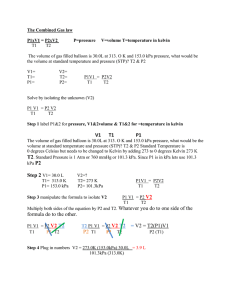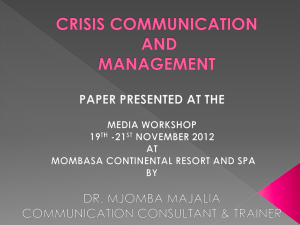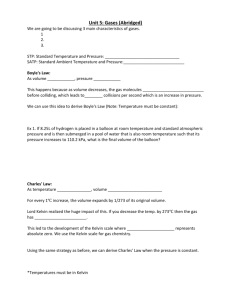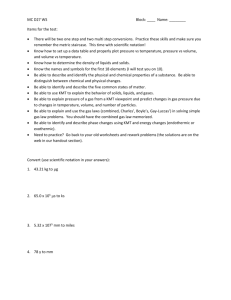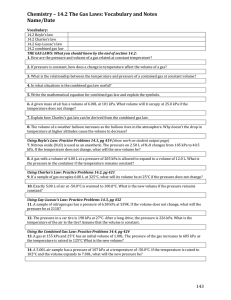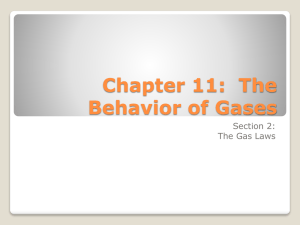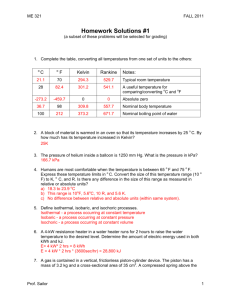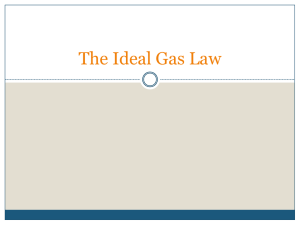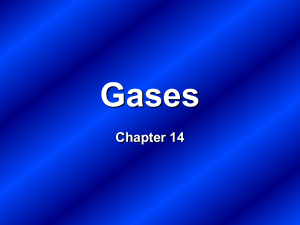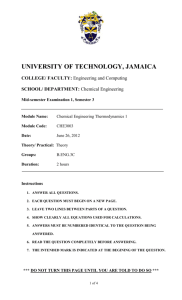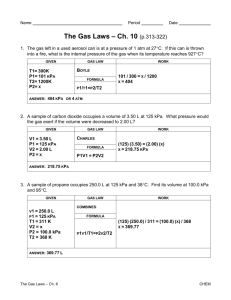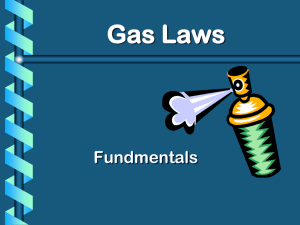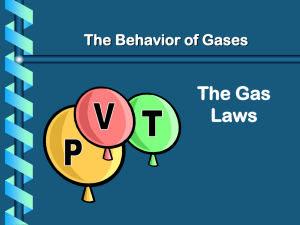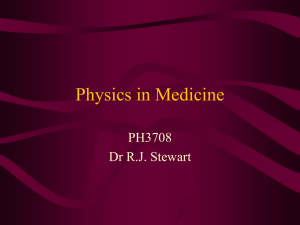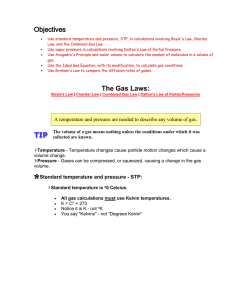Boyle's Law P1V1 = P2V2 e.g. If a sample of gas has a volume of
advertisement
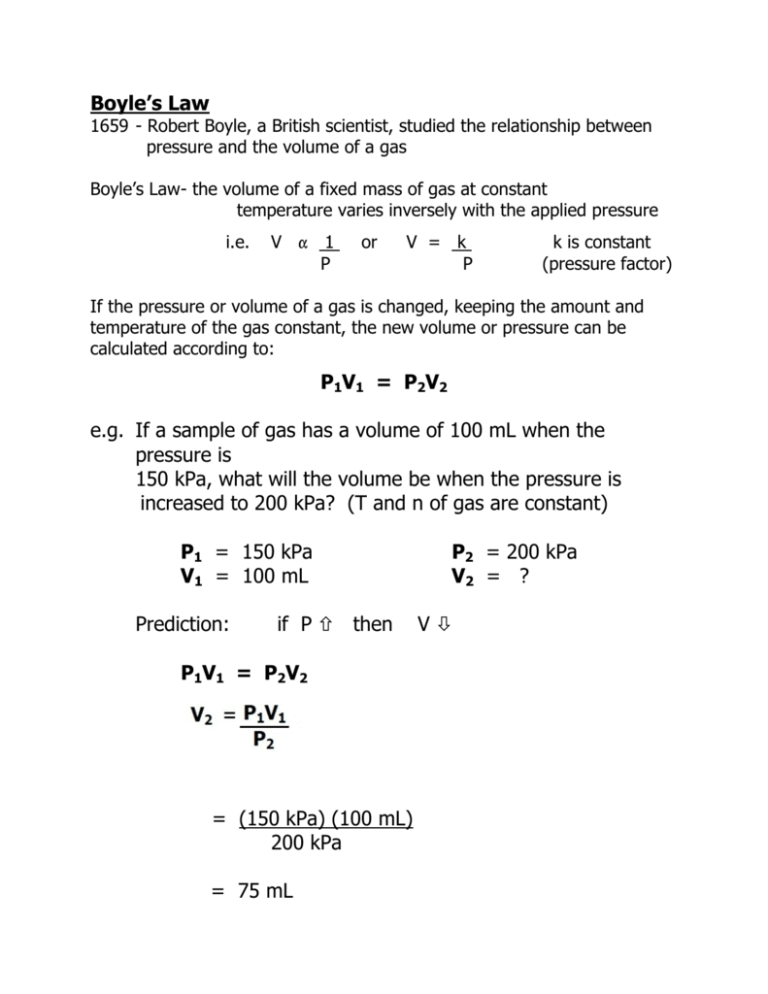
Boyle’s Law 1659 - Robert Boyle, a British scientist, studied the relationship between pressure and the volume of a gas Boyle’s Law- the volume of a fixed mass of gas at constant temperature varies inversely with the applied pressure i.e. V " 1 P or V = k P k is constant (pressure factor) If the pressure or volume of a gas is changed, keeping the amount and temperature of the gas constant, the new volume or pressure can be calculated according to: P1V1 = P2V2 e.g. If a sample of gas has a volume of 100 mL when the pressure is 150 kPa, what will the volume be when the pressure is increased to 200 kPa? (T and n of gas are constant) P1 = 150 kPa V1 = 100 mL Prediction: if P × then P1V1 = P2V2 = (150 kPa) (100 mL) 200 kPa = 75 mL P2 = 200 kPa V2 = ? VØ e.g. What pressure is necessary to raise the volume of 100 mL of gas at a pressure of 150 kPa to 150 mL? (T and n of gas are constant) Absolute Zero Determination The straight line obtained for the Pressure - Temperature graph indicates the pressure of a gas is 0 kPa at - 273 oC. This is believed to be the lowest temperature possible for a gas to achieve. Absolute Zero = - 273.16 oC Hypothetically, all molecular motion stops at this temperature. The Kelvin Scale This is a new temperature scale which makes use of absolute zero. Conversions: o C + 273 = K K - 273 = oC e.g. Complete the following conversions: a) 24.3 oC = b) 280 K = K o C Gay-Lussac’s Law 1804 - Joseph Louis Gay-Lussac, a French scientist, studied the relationship between temperature and the pressure of a gas Gay-Lussac’s Law - the pressure of a fixed mass of gas at constant volume varies directly with the applied temperature i.e. P " T or P = kT k is constant If the temperature of a gas is changed, keeping the amount and volume of the gas constant, the new pressure can be calculated according to:
